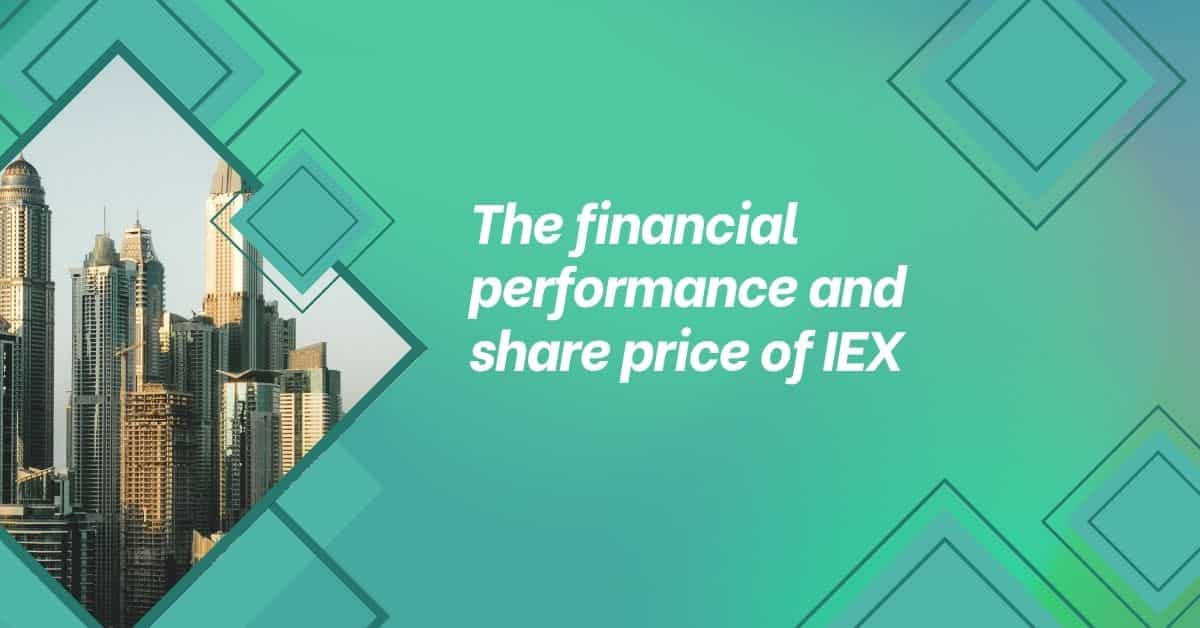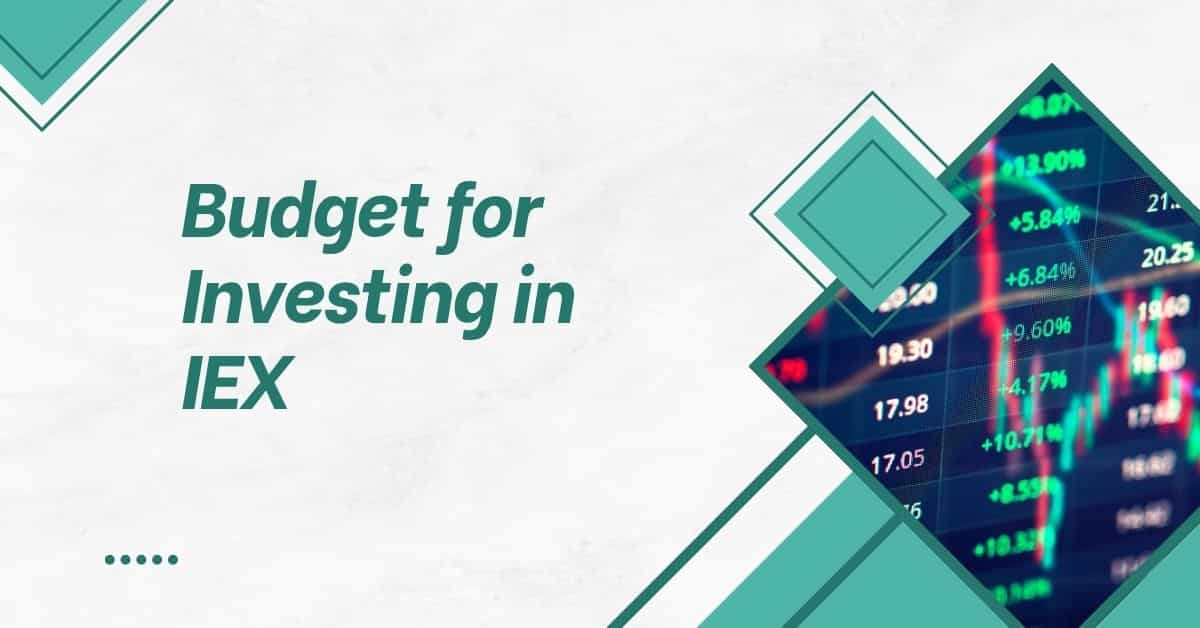IEX Share Alert – The announcement by the Central Electricity Regulatory Commission (CERC) to implement market coupling from January 2026 (Upstox) caused the share price of the Indian Energy Exchange (IEX), the country’s top power trading platform, fall nearly 30% to ₹132.32 on the NSE on July 24, 2025. Investors are worried about future profitability as a result of this regulation move that centralises price discovery across electricity exchanges, affecting IEX’s commanding 90%+ market share in the Day-Ahead Market (DAM) and Real-Time Market (RTM) (LiveMint). This volatility highlights how crucial a carefully thought-out budget is for beginner Indian investors to make safe stock market investments. This article examines the drop in the IEX share price, its implications, and five useful budgeting techniques to assist you in making smart investments and controlling financial risks in 2025.
Understanding IEX and Market Coupling Impact
India’s leading power exchange, IEX was established in 2008 and has its headquarters in New Delhi. It allows the trade of energy-saving certificates, renewable energy certificates (RECs), and electricity. With a 98% market share in electricity trading and more than 7,783 participants—104 distribution companies and 698 power generators—IEX facilitates effective price discovery through its automated platform (IEX India). IEX reported a 15% year-over-year (YoY) volume gain in Q1 FY26 (April–June 2025), trading 32,382 million units (MU), with REC trades rising 149% (Screener).
The market coupling announcement made by the CERC on July 23, 2025, is revolutionary. The Grid Controller of India controls a single, consistent electricity price across all power exchanges due to market coupling, which limits IEX’s autonomy in setting spot prices. “This undermines IEX’s historical dominance in setting spot electricity prices,” said Harshal Dasani, Business Head at INVasset PMS, as the DAM and RTM segments, which contributed over 73 billion units in FY24, face diluted roles (LiveMint). On July 24, 2025, the share price fell 28% as a result of this regulatory change, reaching a 52-week low of ₹131.50 before closing at ₹135.49 (Moneycontrol).
The financial performance and share price of IEX
Investor concerns regarding the impact of market coupling are reflected in IEX’s share price, which is down 29.58% from ₹187.89 to ₹132.32 as of July 24, 2025 (Business Standard). With a market capitalisation of ₹11,798 crore, the stock has a 52-week range of ₹131.50 to ₹244.40. Important financial indicators consist of:

- TTM EPS: increased 15.38% year over year at ₹4.81.
- P/E Ratio: 27.51, indicating relative value, lower than the sector average of 81.01.
- Price-to-book ratio: A premium value is indicated by the price-to-book ratio of 22.66.
- Dividend Yield: 2.27%, providing a consistent income stream.
- Debt-to-Equity Ratio: With a debt-to-equity ratio of 0.00, the balance sheet is debt-free.
- Revenue (2025): 2025 revenue was ₹537.26 crore, and the screener’s net profit was ₹414 crore.
Even though prices dropped 16% YoY, IEX’s Q1 FY26 results, which were released on July 24, 2025, revealed a 15% volume growth and a 149% increase in REC trades (Tickertape). Although the company is attractive due to its low debt and steady dividends, there are risks associated with the regulatory overhang.
| Metric | Value |
| Share Price (July 24,2025) | ₹132.32 |
| 52-Week Range | ₹131.50-₹244.40 |
| Market Cap | ₹11,798 crore |
| TTM P/E Ratio | 27.51 (Sector:81.01) |
| Dividend Yield | 2.27% |
| Debt-to-Equity Ratio | 0.00 |
| TTM EPS | ₹4.81 |
Analyst Opinion and Outlook for Share Prices
Because of the market coupling announcement, analysts have differing views on IEX:
- Buy Ratings: If IEX adjusts to the new rules, some analysts, like as those on TradingView, predict a possible recovery, with targets of between ₹150 and ₹180 by December 2025.
- Sell/Hold Ratings: Citing diminished pricing power, Kotak Securities assigned a “Sell” rating with a target of ₹130 (Business Standard). Others advise waiting until the impact is clarified by the Q2 FY26 results.
- Consensus: Although regulatory uncertainties decrease optimism, the consensus goal is ~₹150, indicating a modest 13% upside from ₹132.32 (Trendlyne).
How IEX handles the regulatory change and how it affects the trajectory of its share price will be revealed in the company’s upcoming earnings report in October 2025 (India Today).
Should Beginners Invest in the IEX Now?
For new investors, the steep drop in IEX’s share price offers both opportunities and risks:
The reasons for Investing:
- Low P/E Ratio: IEX’s 27.51 indicates value because it is undervalued in relation to the sector’s 81.01 (Screener).
- Dividend Yield: For conservative investors, a yield of 2.27% offers a consistent income.
- Growth Potential: IEX’s long-term prospects are supported by India’s power demand, which is expected to increase at a 6% CAGR through 2030 (Economic Times).
Reasons to be cautious:
- Regulatory Risk: Given the substantial income contributions from DAM and RTM, market coupling may result in a decline in IEX’s market share and profitability (LiveMint).
- Volatility: According to TradingView, an 11.11% volatility and a 29.58% single-day decrease signify notable price fluctuations.
- Retail Sell-Off: Due to a drop in confidence, retail shareholding fell from 39.25% in March 2024 to 29.42% in June 2025 (CNBC TV18).
Recommendation: If you are a beginner with a long-term horizon (5+ years) and think IEX can adjust to market coupling, the recent price decrease may be a purchasing opportunity. Risk-averse investors, however, ought to hold off until the Q2 FY26 results are in or until the price stabilises at ₹120–₹130. Keep your IEX holdings to 5–10% of your portfolio and diversify with fixed deposits or Nifty 50 index funds (Groww).
Budget for Investing in IEX
Use these budgeting techniques designed for Indian beginners to invest in IEX without experiencing financial strain:

1. Follow the 50/30/20 Rule
Set aside 30% of your income for desires (leisure), 20% for savings and investments, and 50% for requirements (rent, EMIs). Set aside ₹10,000 for investments and savings, and ₹1,000 to ₹2,000 for IEX, for a monthly income of ₹50,000. This guarantees that you may make investments without sacrificing necessities (NerdWallet).
2. Start by paying off high-interest debt
Prior to investing, pay off high-interest debts such as credit cards (20–40%) and personal loans (10–20%), as their expenses frequently outweigh IEX’s possible profits (~10–15%). For instance, a ₹1,500 profit on a ₹10,000 IEX investment at 15% is greatly outweighed by the ₹18,000 in interest savings from paying ₹5,000 a month on a ₹50,000 credit card at 36% (Financial Express).
3. Establish an Emergency Fund
To prevent selling shares during market falls like the recent IEX crash (Policybazaar), save three to six months’ worth of expenses (₹1.5 to ₹3 lakh for ₹50,000 monthly costs) in a high-yield savings account with institutions like [HDFC Bank] or [SBI].
4. Use Dollar-Cost Averaging to Start Small
Using dollar-cost averaging, spread your monthly purchases of ₹5,000 to ₹10,000 (38 to 75 shares at ₹132.32) in IEX (e.g., ₹2,000/month). This lessens the effect of volatility, as demonstrated by the 29.58% drop in IEX (Zerodha).
5. Track expenses and diversify
By reducing non-essentials like eating out, you can save ₹500 to ₹1,000 a month by using applications like [Money View] or [Walnut] to track your expenditure. To balance IEX’s risks, diversify by putting half of your investing budget into fixed deposits or mutual funds (Groww).
Beginners in India who use efficient budgeting techniques can increase their savings and build lasting wealth. According to the well-known 50/30/20 ratio, 20% should go towards savings or investments, 30% should go towards wants, and 50% should go towards needs. For example, constant investing is ensured by setting aside ₹10,000 from a monthly salary of ₹50,000. Setting high-interest debt repayment as a top priority, such as paying off ₹50,000 in credit card debt, can result in yearly savings of up to ₹18,000, which is more than average stock market returns. Having a ₹1.5 lakh emergency fund helps prevent panic selling when the market declines. Volatility is reduced by using dollar-cost averaging, such as investing ₹2,000 per month in IEX shares. Last but not least, using [Money View] to check spending can uncover hidden savings, freeing up at least ₹1,000 per month for investments.
How to Make IEX Investments
- Open a Demat Account: use digital KYC (PAN, Aadhaar, and bank details) to register with SEBI-regulated platforms such as [Zerodha], [Groww], or [Upstox].
- Put Money Into Your Account: Use net banking or UPI to transfer money.
- Search for IEX: Use the NSE/BSE ticker “IEX” to search for IEX.
- Make a Purchase: Select a market order for the current price or a limit order (for example, ₹130).
- Monitor Performance: For information on earnings or changes to regulations, follow the share price and news on [Moneycontrol], [NSE India], or [Economic Times].
Frequently Asked Questions (FAQs)
1. Why did IEX’s share price crash?
The market coupling statement from the CERC, which may lessen IEX’s pricing power (Upstox), was the cause of the 29.58% drop on July 24, 2025.
2. Is IEX a good investment for beginners?
Although its low P/E and dividends make it appealing, the volatility and regulatory risks call for prudence and diversification (Screener).
3. Should I wait or invest now?
Risk-averse investors should wait for Q2 results or a price stabilisation, while long-term investors can purchase during this decline (Business Today).
4. How may investment be aided by budgeting?
By giving debt repayment and an emergency fund a priority, a budget guarantees that you can invest without financial burden (NerdWallet).
5. What risks does IEX cause?
Its market share and profitability are under risk from volatility, competition, and regulatory changes (LiveMint).
An Example from Real Life
Scenario: Priya, a 30-year-old Bengaluru professional who makes ₹50,000 a month, has a ₹1 lakh investment portfolio and ₹50,000 in credit card debt at 36%.
- Action: Priya would save ₹18,000 in interest by paying ₹5,000 a month to pay off her loan in about ten months. After creating a ₹1.5 lakh emergency fund, she uses [Groww] to invest ₹5,000, or 5% of her portfolio, in IEX, purchasing 38 shares at ₹132.32. She diversifies with ₹50,000 in a Nifty 50 index fund and sets a 7% stop-loss at ₹123.06. She uses [Money View] to keep track of her spending.
- Outcome: Her investment increases to ₹5,700, a ₹700 gain (14%), if IEX hits ₹150 by December 2025. She makes secure investments by diversifying and managing debt.
Conclusion
The volatility of stock investments is highlighted by the July 24, 2025, 29.58% drop in IEX’s share price to ₹132.32 as a result of the CERC’s market coupling announcement. This serves as a caution to beginners to carefully consider their budget before buying equities such as IEX. Make paying off high-interest debt your top priority, save money for emergencies, and use dollar-cost averaging to make modest investments. To balance risks and benefits, use resources like [Zerodha] or [Groww], keep an eye on [Moneycontrol] updates, and speak with a financial counsellor. To capitalise on IEX’s potential or take advantage of comparable market opportunities in 2025, set your budget now!
Disclaimer: Investing in the stock market is risky. Performance in the past does not guarantee future outcomes. Before making an investment, speak with a knowledgeable financial counsellor. This article is only meant to be educational.
CoinDCX Hack: How to Budget & Protect Your Crypto
Ola Electric Share Price NSE – Budget Investing for Beginners!
Money Management Tips for Couples – Love Better, Spend Smarter

